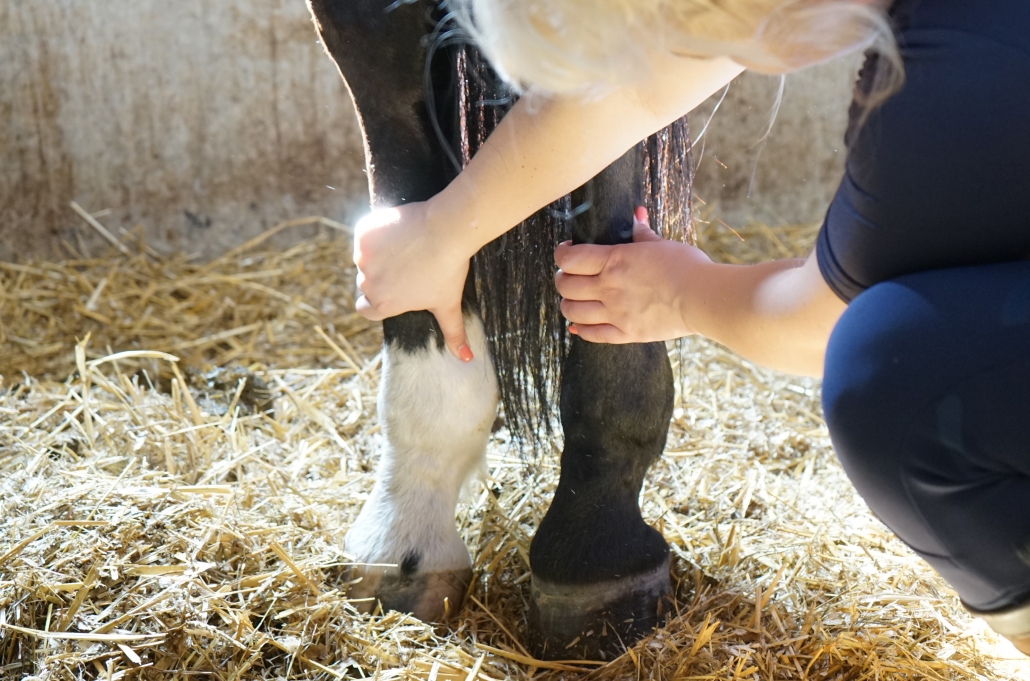Is one thick leg also called stocking up? Morgan gives the answer
Most of us are familiar with the term ‘stocking up’, where fluid builds inside the horse’s leg after a night of (almost) not moving.
But what if only one of your horse’s legs is thicker than the other. It isn’t very swollen or warmer than the rest of his body. Besides, it goes away once your horse starts moving.
That sounds like stocking up, but that happens most of the time in two legs.
So what can it be?
A member of Morgan Lashley’s online training asked us that question and Morgan gave her the following tips.
With stocking up, there’s an accumulation of fluids because of an imbalance in the lymphatic system or the blood circulation.
This happens usually with horses that move less than normal, like standing in his box at night.
For example, if your horse is turned out all day and locked in his box at night, the imbalance can be bigger and your horse could be stocking up.
Despite that your horse might be in a very big box.
”Don’t fight a symptom if you don’t know the cause yet.”
Usually you see with stocking up that the thickness in both legs is about the same size.
But what if your horse only has one thick leg?
The fact that your horse only has one thick leg, can be the result of several different causes.
It’s possible that your horse has had lymphangitis in the past. This is a kind of a elephants leg, which caused the entire leg to be swollen.
It that’s the case, it might have resulted in less elasticity of the skin or the lymphatic vessels. So the discharge in the lymphatic vessels in one leg is less good than the other leg.
That can cause one leg to be more swollen than the other.
When your horse hasn’t had lymphangitis, you have to look for other causes. Maybe there’s a small wound on his leg or does your horse have mud rash.
The best way to find out if your horse’s leg is thicker because of stocking up, is to check if the thickness is on the entire leg or just around a specific area.
For example, feel if it’s not the fetlock or the tendon that is thicker than normal.
If it is stocking up, you can treat it with compression or stable bandages that make sure that the fluids don’t accumulate when your horse doesn’t move as much at night.
But only go for that solution if you’re sure that there isn’t another cause for your horse’s swollen leg.
Otherwise you’re figthing a symptom while you don’t know the cause yet.





